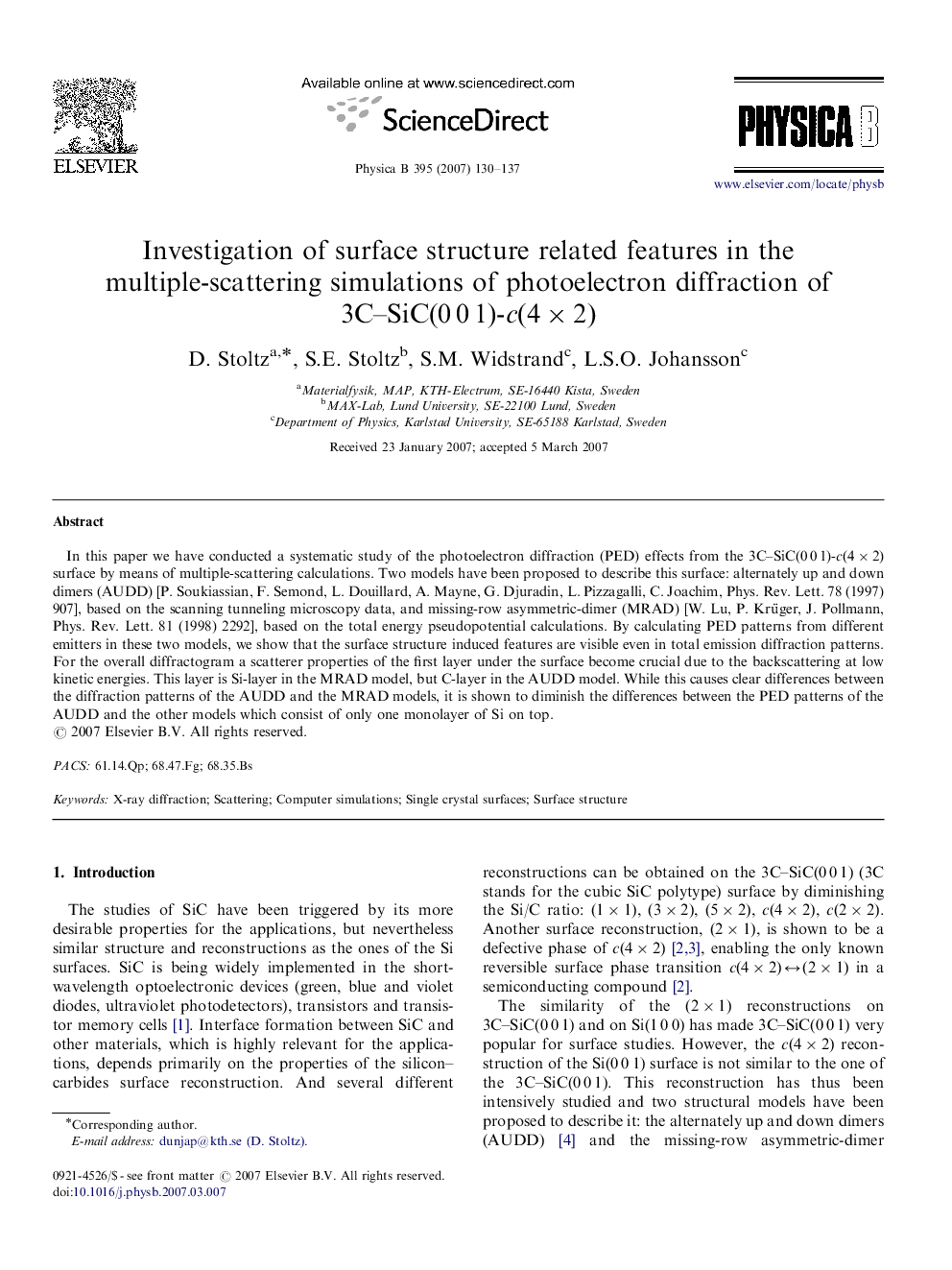| Article ID | Journal | Published Year | Pages | File Type |
|---|---|---|---|---|
| 1814282 | Physica B: Condensed Matter | 2007 | 8 Pages |
Abstract
In this paper we have conducted a systematic study of the photoelectron diffraction (PED) effects from the 3C-SiC(0Â 0Â 1)-c(4Ã2) surface by means of multiple-scattering calculations. Two models have been proposed to describe this surface: alternately up and down dimers (AUDD) [P. Soukiassian, F. Semond, L. Douillard, A. Mayne, G. Djuradin, L. Pizzagalli, C. Joachim, Phys. Rev. Lett. 78 (1997) 907], based on the scanning tunneling microscopy data, and missing-row asymmetric-dimer (MRAD) [W. Lu, P. Krüger, J. Pollmann, Phys. Rev. Lett. 81 (1998) 2292], based on the total energy pseudopotential calculations. By calculating PED patterns from different emitters in these two models, we show that the surface structure induced features are visible even in total emission diffraction patterns. For the overall diffractogram a scatterer properties of the first layer under the surface become crucial due to the backscattering at low kinetic energies. This layer is Si-layer in the MRAD model, but C-layer in the AUDD model. While this causes clear differences between the diffraction patterns of the AUDD and the MRAD models, it is shown to diminish the differences between the PED patterns of the AUDD and the other models which consist of only one monolayer of Si on top.
Keywords
Related Topics
Physical Sciences and Engineering
Physics and Astronomy
Condensed Matter Physics
Authors
D. Stoltz, S.E. Stoltz, S.M. Widstrand, L.S.O. Johansson,
